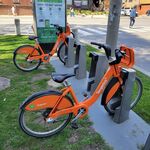1) First of all, "cost per daily rider" is not a useful metrics for capital investments. Noone is going to use those $90k in transit benefits in just one day.
For capital infrastructure, spreading the benefits over 50 years is reasonable. Furthermore, I prefer to count cost per ride rather than daily rider (most riders make two rides every day).
Thus for Eglinton West, we are going to have 52k daily rides X 365 days/year X 50 years = 949,000,000 rides. If the capital cost is 2.34 billion (is it really that much? but anyway), we get about 2.5 dollars per ride. A pretty good price, that's 1/6 of the new minimum hourly wage. If the new line saves just 10 min per ride, it is already worth it.
2) Now for SSE, we aren't building the subway just to eliminate the transfer. The existing line (SRT) is crumbling and needs replacement. Thus, the cost of removing the transfer is equal to the difference between the cost of subway and the cost of cheapest alternative (light rail in the Uxbridge corridor).
Not sure how much that difference is; I assume the ballpark is $2 billion for the tunneled subway under McCowan, or $1 billion for a subway in the same Uxbridge corridor.
For 60k daily rides, we will have 60k X 365 days/year X 50 years =1,095,000,000 rides in 50 years. Capital cost per ride: about 2 dollars in the first case, or about 1 dollar in the second case. Surely worth it.




